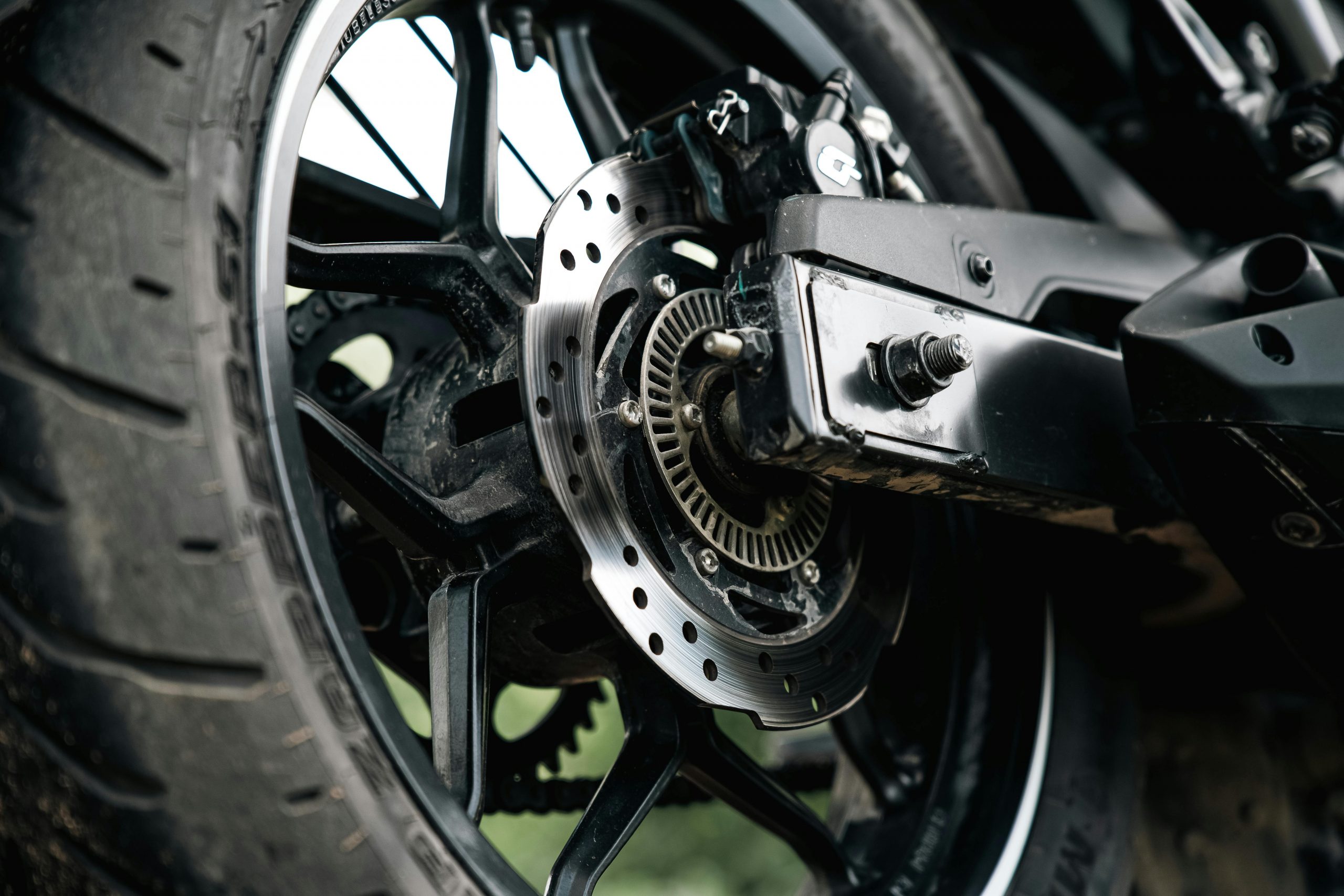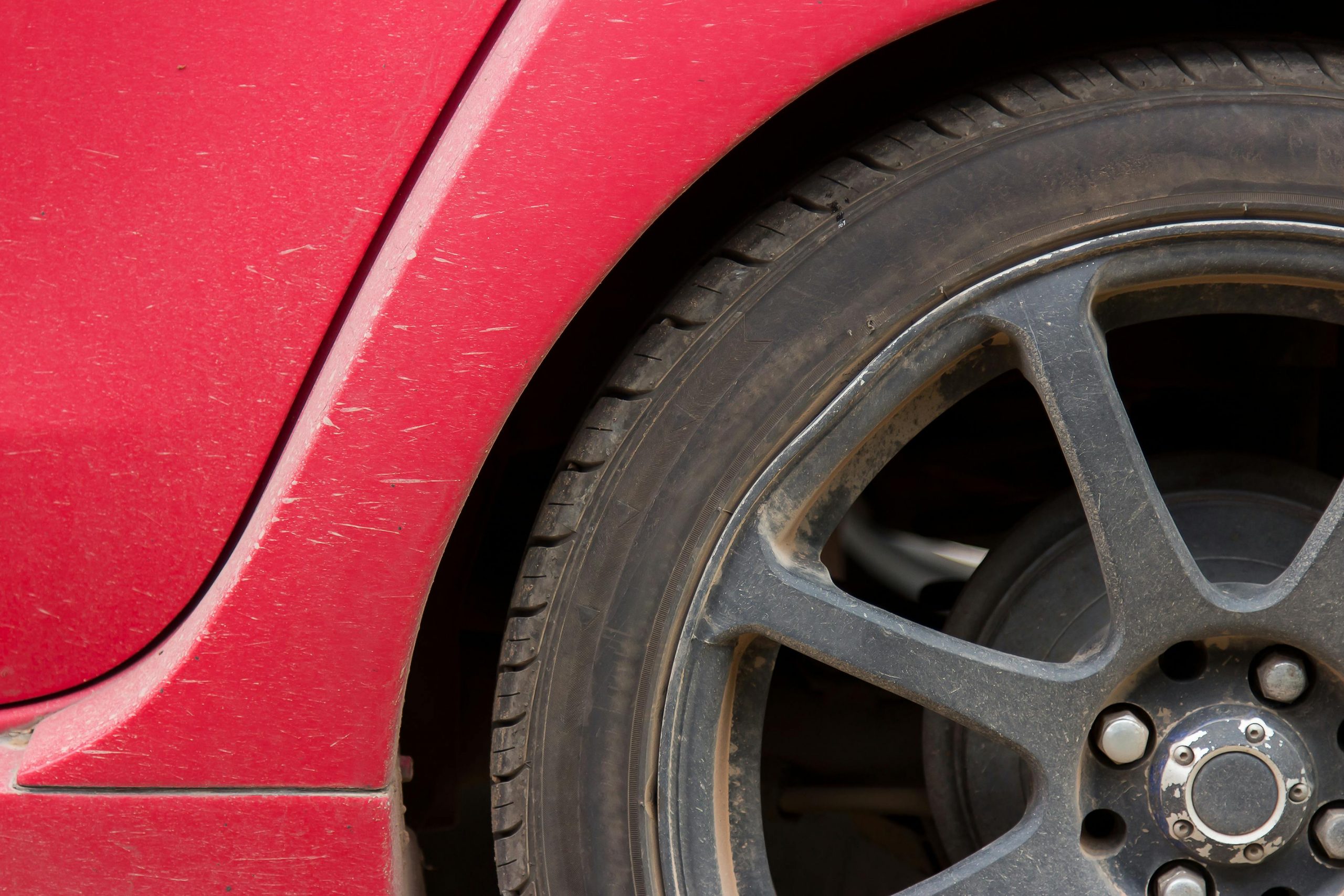Your tires are one of the most important parts of your vehicle. They’re the only thing touching the road, which means your safety, fuel economy, and driving performance all depend on them. But tires don’t last forever. Over time, they wear out, get damaged, or fail completely if not properly cared for.
In this guide, we’ll walk you through the most common types of tire damage, how to recognize them, what causes them, and what you should do if you spot signs of trouble. By learning how to catch damage early, you can avoid breakdowns, blowouts, and expensive tire replacements.
1. Punctures and Nail Damage

What It Is: Punctures occur when sharp objects—like nails, screws, glass, or even metal shards—pierce the tire and allow air to slowly or suddenly escape. This is one of the most common types of tire damage and can happen anytime, especially if you drive over construction zones or debris-filled roads.
Signs to Watch For
- A slow air leak
- A tire that keeps losing pressure, even after inflation
- Visible objects embedded in the tread
- A soft or flat tire when the vehicle has been parked
What to Do: If the puncture is small (less than ¼ inch) and located on the tread, a professional tire shop can often repair it with a plug or patch. However, punctures in the sidewall or larger holes typically require a full tire replacement. Ignoring a puncture can cause a blowout, which is dangerous at high speeds. Always check your tires regularly and don’t delay repairs.
2. Sidewall Damage
What It Is: Sidewall damage refers to any cuts, cracks, bubbles, or bulges that appear along the side of a tire. Unlike the tread area, the sidewall has less reinforcement and is more vulnerable to damage. Because it plays a crucial role in supporting the tire’s structure, any damage to the sidewall can weaken the entire tire and lead to sudden failure.
Causes
- Hitting curbs when parking or turning
- Driving over potholes or road debris
- Tire aging, dry rot, or long-term exposure to sunlight (UV damage)
- Underinflated tires flexing too much under pressure
What to Do: Sidewall damage is not repairable. If you notice a bubble, slice, or deep crack in your tire’s sidewall, replace the tire as soon as possible. Driving on a damaged sidewall increases the risk of a blowout, which can be extremely dangerous—especially at highway speeds. Always inspect your tires regularly and avoid obstacles that can cause sidewall stress.
3. Tread Wear
What It Is: Tread wear refers to the slow erosion of the tire’s outer surface due to regular driving. As you rack up miles, the tread—designed to grip the road and channel water—becomes shallower, reducing traction and increasing the risk of slipping, especially in wet or icy conditions.
Types of Tread Wear
- Center Wear: Caused by overinflated tires that wear down more quickly in the middle.
- Edge Wear: Happens when tires are underinflated, leading to extra wear on both sides of the tread.
- Cupping or Feathering: Uneven patches or scalloped edges due to worn suspension or shocks.
- Uneven Wear: Can result from tires being out of balance, misaligned, or improperly rotated.
What to Do: Inspect your tire tread regularly using a tread depth gauge or the penny test. If you insert a penny and can see the top of Lincoln’s head, the tread is too shallow—under 2/32 of an inch—and the tire should be replaced. Rotate your tires every 5,000–8,000 miles to promote even wear and improve lifespan. Proper inflation and alignment also help prevent premature tread damage.
4. Tire Cracks and Dry Rot
What It Is: Tire dry rot is a condition where the rubber on your tires begins to crack, fade, and lose flexibility. This usually happens due to aging, frequent exposure to sunlight (UV rays), extreme temperatures, or long periods of inactivity. Dry rot weakens the tire structure and can lead to dangerous blowouts, even if the tread still looks okay.
Signs of Dry Rot
- Cracks along the sidewall or in the tread
- Rubber that looks faded, chalky, or brittle
- Tires that lose air even when there’s no visible puncture
- Small pieces of rubber flaking off the surface
What to Do: Dry rot cannot be repaired. Once the rubber begins to break down, the tire is no longer safe. Even if the tread isn’t worn out, a dry-rotted tire should be replaced immediately. To prevent dry rot, store vehicles in shaded areas, drive regularly, and check tire condition every few months—especially on RVs, trailers, or seasonal vehicles.
5. Bulges and Bubbles
What It Is: Bulges and bubbles appear when air escapes from the inner liner of the tire and gets trapped between the tire’s inner layers. This causes a noticeable lump to form on the sidewall or tread area. It means the internal structure of the tire has been compromised, even if the tire looks fine otherwise.
Causes
- Hitting a pothole, curb, or speed bump too hard
- Driving over road debris
- Manufacturing defects that weaken the internal layers
- Overloading the vehicle or running underinflated tires
Why It’s Dangerous: A bulge or bubble signals a weak spot that could lead to a sudden blowout. Blowouts are especially dangerous when driving at high speeds or on highways, putting you and others at serious risk.
What to Do: Do not continue driving on a tire with a bulge. Replace it immediately—even if the rest of the tire looks fine. A tire professional can help confirm the damage and recommend the right replacement.
6. Bead Damage
What It Is: Bead damage refers to harm done to the edge of the tire that presses tightly against the rim. This part of the tire forms an airtight seal, so any damage to the bead can result in air leaks and poor tire performance.
Causes
- Improper mounting or removal of the tire from the rim
- Corrosion or rust on the wheel rim
- Driving on a flat tire or one with very low pressure
- Using the wrong equipment or excessive force during tire changes
Signs
- Constant or slow air loss, even without a visible puncture
- Difficulty inflating the tire or keeping it inflated
- Hissing sounds or visible air bubbles from where the tire meets the rim
What to Do: If bead damage is minor, a tire technician may be able to fix it by cleaning the rim and resealing the tire. In cases of serious bead damage—such as tears or deep cuts—replacing the tire is the safest option. Ignoring the problem can lead to a complete seal failure and dangerous driving conditions.
7. Impact Damage
What It Is: Impact damage occurs when your tire hits something hard—like a pothole, curb, or road debris. This kind of damage can affect the tread, sidewall, or even the inner layers of the tire. While some signs are visible, others might not be obvious right away.
Signs
- Visible cracks, cuts, or scrapes on the tire
- Bulges or bubbles in the sidewall
- Vibrations or wobbling while driving
- A tire that loses air pressure quickly or won’t stay inflated
What to Do: If you suspect impact damage, have your tire inspected by a professional right away. Even if you don’t see damage on the outside, the internal structure of the tire may be compromised, which can lead to a sudden blowout. In many cases, replacement is safer than repair, especially if the damage affects the sidewall or inner belts. Don’t delay—impact damage can be dangerous if ignored.
8. Tire Blowouts
What It Is: A tire blowout is a sudden, complete loss of air pressure in the tire. This usually happens without much warning and can cause you to lose control of your vehicle. Blowouts are one of the most dangerous forms of tire damage, especially at high speeds or on busy roads.
Causes
- Overloading the vehicle beyond its recommended weight capacity
- Hitting road hazards like potholes, curbs, or sharp debris
- Driving on a flat, underinflated, or severely worn-out tire
- Heat buildup from long-distance or high-speed driving
What to Do: If a blowout happens while you’re driving:
- Keep both hands firmly on the steering wheel
- Avoid slamming the brakes; instead, gradually ease off the gas
- Steer your vehicle to the side of the road safely
- Once stopped, change the tire if you can do so safely, or call for roadside assistance
After a blowout, always replace the damaged tire and check the remaining tires for signs of stress or damage.
9. Belt Separation
What It Is: Belt separation occurs when the internal steel belts in a tire begin to break away from the surrounding rubber. These belts are crucial for maintaining the tire’s shape and strength. Once they separate, the tire becomes unstable and more likely to fail—often without much warning.
Signs
- Vibrations in the steering wheel or seat while driving
- A rhythmic thumping noise as the tire rotates
- Uneven tread wear or bulging areas along the tire surface
- Visible distortion in the shape of the tire when viewed from the side
What to Do: Belt separation is serious and cannot be fixed. If you notice any of these signs, stop driving and replace the tire right away. Driving on a tire with belt separation increases the risk of a sudden blowout, especially at high speeds. Always have a professional inspect your tires if you suspect this type of damage.
10. Tire Aging and Expiration
Even if a tire looks fine, it may not be safe. Most manufacturers recommend replacing tires every 6–10 years, regardless of mileage.
Signs of Aging
- Dry rot
- Fading color
- Brittleness
- Hard rubber that doesn’t flex
Check the DOT code on the tire’s sidewall. The last four digits show the week and year it was made (e.g., 1020 = 10th week of 2020).
How to Prevent Tire Damage

Preventing damage is easier than dealing with it. Follow these tips to extend the life of your tires:
- Check Tire Pressure Monthly: Use a gauge and inflate to the recommended PSI.
- Rotate Tires Regularly: Every 5,000–8,000 miles to avoid uneven wear.
- Inspect for Damage: Look for cracks, bulges, and nails.
- Avoid Hazards: Steer clear of potholes, curbs, and debris when possible.
- Don’t Overload Your Vehicle: Check the weight limit in your owner’s manual.
- Replace Tires on Time: Even if they look okay, old tires can be dangerous.
When to See a Professional
You should have a professional inspect your tires if:
- You notice any of the damage listed above.
- Your vehicle shakes, pulls, or vibrates while driving.
- You hear unusual noises from the tires.
- Your tire keeps losing air.
Tire shops can tell you if a tire is safe to repair or needs to be replaced. Ignoring damage can lead to bigger problems—including accidents.
Final Thoughts
Tires play a big role in how your car handles, rides, and keeps you safe. Knowing the different types of tire damage can help you catch small issues before they become dangerous or expensive problems.
While some minor damage—like small tread punctures—can often be repaired, more serious issues such as sidewall bubbles or belt separation usually require a full replacement. That’s why regular tire checks and basic maintenance matter. Rotate your tires, watch for uneven wear, and avoid road hazards when possible.
Tire trouble can happen when you least expect it. But with a little awareness and timely care, you can reduce the risk and stay ahead of problems. Stay safe out there—and give your tires the attention they deserve.
